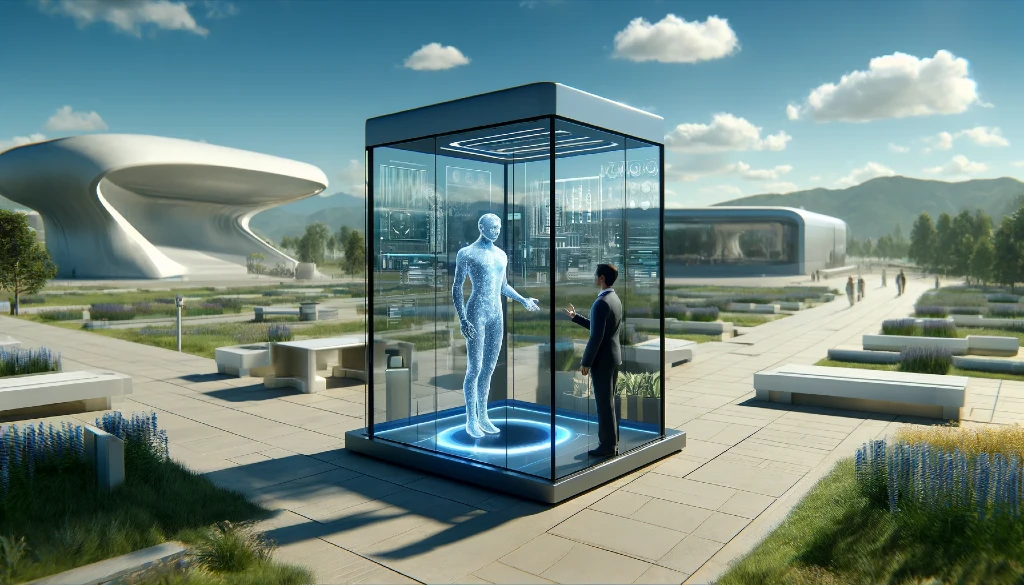Introduction
Imagine a world where you can have a natural conversation with your computer, just like you would with a friend. No more typing cryptic commands or navigating complex menus. Conversational Intelligence (CI) is rapidly transforming the way we interact with technology, making it possible to talk to our computers in plain English and get things done.
This rise of AI-powered interfaces is fueled by the increasing demand for user-friendly and intuitive ways to interact with machines. Gone are the days of frustration caused by clunky interfaces and unresponsive systems. Conversational AI promises a future where computers can understand our questions, requests, and even jokes, creating a smoother and more engaging user experience.
The Rise of Conversational AI
The ability for computers to hold natural conversations isn’t science fiction anymore. It’s a reality fueled by the remarkable advancements in Artificial Intelligence (AI). This section delves into the core technologies that have brought Conversational AI to life.
One key driver is the rise of AI-driven speech synthesis. Imagine a computer voice that sounds natural and engaging, no longer robotic or monotone. Speech synthesis technology has come a long way, allowing AI systems to generate human-like voices that can convey emotions and nuances. This makes conversations with computers feel more natural and eliminates the robotic feel of earlier interactions.
But speech synthesis is just one piece of the puzzle. The real magic happens behind the scenes with advancements in natural language processing (NLP). NLP equips AI systems with the ability to understand the complexities of human language. This includes deciphering the meaning behind our words, accounting for context, and even recognizing sarcasm or humor.
Here’s how it works: When you speak to a Conversational AI system, NLP algorithms analyze your words to understand their meaning. They consider the context of the conversation, grammar, and even slang to ensure they interpret your intent correctly. This allows the AI to respond in a way that’s relevant, informative, and even helpful.
The combination of AI-driven speech synthesis and NLP is paving the way for a future where interacting with computers feels more like talking to a friend and less like battling a complicated machine.
Innovations in AI-powered Dialogue Systems
The brainpower behind Conversational AI goes beyond just understanding what we say. It’s about creating a truly engaging dialogue. This is where advancements in machine learning (ML) algorithms come into play.
Imagine an AI system that gets smarter with every interaction. That’s the power of ML! These algorithms allow dialogue systems to continuously learn and improve their conversational abilities. By analyzing vast amounts of data, including past interactions and user feedback, ML algorithms refine the AI’s grasp of language and its ability to respond in a natural and informative way.
The key lies in a specific type of ML called deep learning. Deep learning models are inspired by the structure and function of the human brain, allowing them to process information in a layered and hierarchical manner. This enables AI systems to recognize complex patterns in language and develop a deeper understanding of human conversation.
But it’s not just about understanding words. Dialogue systems are also incorporating techniques like sentiment analysis to gauge the emotional tone of user queries. This allows the AI to tailor its responses to be more empathetic and supportive, creating a more positive user experience.
The innovations in AI-powered dialogue systems extend beyond just technical prowess. Researchers are also focusing on developing human-centered design principles. This ensures that AI conversations feel natural, engaging, and even enjoyable. By incorporating elements like humor, personality, and context awareness, AI systems can move beyond simple question-and-answer interactions and create truly meaningful dialogues.
The future of Conversational AI is bright, with continuous advancements in ML algorithms, deep learning techniques, and human-centered design promising even more sophisticated and natural computer conversations in the years to come.
The Future of AI in Computerized Conversations
The potential applications of Conversational AI are vast and ever-expanding. Let’s explore some exciting possibilities that lie ahead:
- Revolutionized Virtual Assistants: Imagine a virtual assistant that can not only control your smart home but also understand your needs and preferences. Conversational AI promises virtual assistants that can anticipate your tasks, proactively offer help, and engage in natural conversations, making them an even more valuable asset in our daily lives.
- Smarter Customer Service: Customer service chatbots powered by AI will no longer be limited to scripted responses. Conversational AI paves the way for chatbots that can understand complex questions, address customer concerns more effectively, and even personalize interactions for a smoother and more efficient service experience.
- Personalized Education: Imagine learning from an AI tutor that tailors its explanations to your individual learning style. Conversational AI can create personalized learning experiences, providing explanations, answering questions in real-time, and adapting to your pace for a more engaging and effective education.
- Enhanced Accessibility: Conversational AI has the potential to break down communication barriers for people with disabilities. Imagine voice-controlled interfaces that can understand spoken commands and provide assistance for those with limited mobility. AI can also translate languages in real-time, fostering communication and understanding across cultures.
These are just a few examples of the transformative potential of Conversational AI. As the technology continues to evolve, we can expect even more innovative applications that will reshape how we interact with computers in every aspect of our lives.
Enhancing Interaction with AI Technology
While Conversational AI holds immense promise, getting the most out of your interactions with AI systems requires some know-how:
- Speak Clearly and Concisely: Just like talking to a new friend, clear communication is key. Avoid overly complex sentences or jargon and enunciate your words for better understanding by the AI.
- Provide Context: The more context you provide, the better the AI can understand your intent. For example, instead of simply asking “What’s the weather like?”, provide a location and timeframe for a more accurate response.
- Be Patient (but Don’t Hesitate to Correct): AI systems are still under development, and occasional misunderstandings can occur. Be patient if the AI doesn’t understand you the first time, but don’t hesitate to rephrase your query or politely correct it for better future interactions.
- Explore the Capabilities: Many AI systems offer a range of capabilities beyond basic questions and answers. Take some time to explore the functionalities of your AI assistant or chatbot to unlock its full potential.
By following these simple tips, you can enhance your interaction with AI technology and experience the benefits of Conversational AI more effectively. Remember, as AI continues to learn and evolve, so too will its ability to understand and respond to our needs.
Building the Future of AI Together with Verdict
At Verdict, we believe the future of AI lies in collaboration. We’re not just creating another AI platform; we’re building a future where AI learns and evolves through real-world interactions and the collective wisdom of our community.
Every search, chat, and shared result on Verdict contributes to a more comprehensive and human-like AI. Your interactions become the building blocks that shape the future of AI.
Join Verdict and be a part of this exciting journey! Share your experiences, ask questions, and help us build an AI that reflects our diversity, learns from our collective experiences, and expands with our knowledge. Together, we can create an AI that’s not just intelligent, but truly understands the human experience.
Conclusion
Conversational Intelligence is rapidly transforming the way we interact with computers. Imagine a future where computers can engage in natural conversations, understand your needs, and become a seamless extension of your daily life. The potential of AI in computerized conversations is vast, from revolutionizing virtual assistants to enhancing accessibility for everyone.
As we’ve explored, innovations in AI-powered dialogue systems and a commitment to human-centered design are paving the way for a more natural and engaging future for human-computer interaction.
This is just the beginning of the AI revolution. For more thought-provoking discussions on AI’s impact, check out our blog page! We explore topics like AI’s Influence on News Coverage, AI’s Interaction with Human Computing, and many more. Stay tuned for future articles as we delve deeper into the exciting world of Artificial Intelligence.










